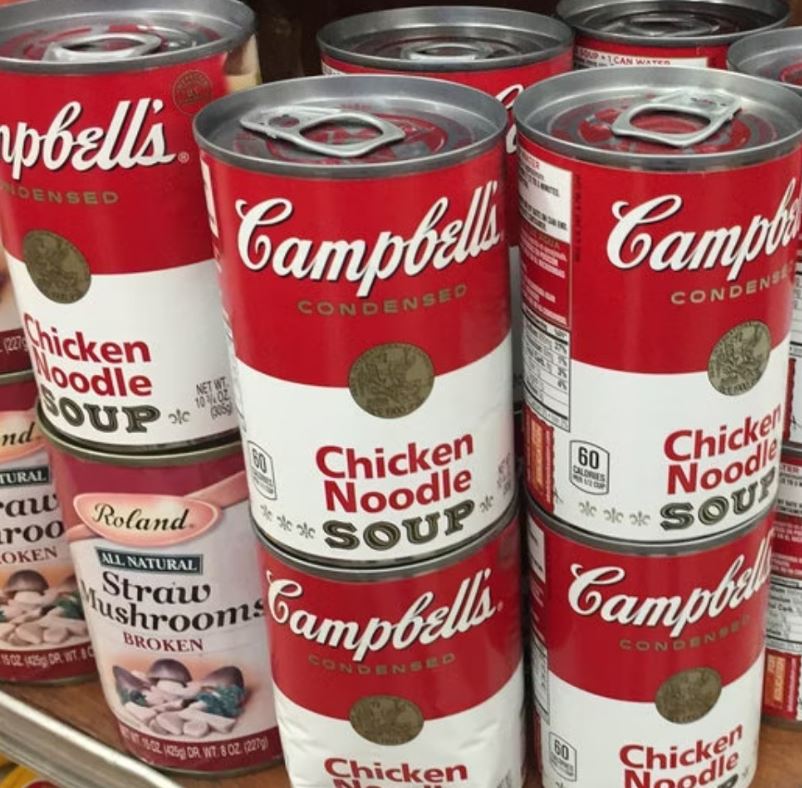Campbell’s Soup has been a staple in American households for nearly two centuries, a brand synonymous with comforting, easy-to-make meals. Its iconic red-and-white cans have graced pantry shelves for generations. However, in an era where consumer preferences are rapidly evolving, this once unshakable giant finds itself on precarious ground. The brand faces an uncertain future as it struggles to remain relevant in a market increasingly driven by demands for natural and unprocessed foods. The question looms: can Campbell’s adapt to survive, or will it become a relic of the past?

The winds of change have swept through the food industry, and Campbell’s core offerings—convenient but heavily processed soups—have become less appealing to modern consumers. Health-conscious individuals are gravitating toward fresh, organic, and minimally processed options, leaving many traditional brands scrambling to keep up. While Campbell’s has made efforts to respond to these shifting demands, these changes have been fraught with challenges.
In an attempt to diversify its portfolio and appeal to a broader audience, Campbell’s embarked on a spree of acquisitions. The company expanded into the fresh and organic food market with purchases like Bolthouse Farms and Garden Fresh Gourmet, hoping to capitalize on the booming health-food trend. However, these strategic moves came at a significant cost. The acquisitions saddled Campbell’s with a staggering $9 billion in debt, creating financial pressures that have only exacerbated its struggles. Instead of revitalizing the brand, the acquisitions have become a heavy burden, dragging Campbell’s into deeper financial instability.
Adding to its woes is the ongoing internal conflict within its leadership. The Dorrance family, which controls 40% of Campbell’s shares, has clashed with Daniel Loeb, the head of Third Point, a hedge fund that holds a 7% stake in the company. Loeb has been vocal in demanding sweeping changes to Campbell’s operations, including a rebranding effort that would overhaul its iconic red-and-white packaging. For Loeb, these changes are necessary to reinvigorate the brand and align it with modern consumer tastes. The Dorrance family, however, has resisted such drastic measures, leading to a bitter power struggle that has spilled into legal disputes. Accusations of mismanagement have flown on both sides, creating a leadership vacuum at a time when unity is desperately needed.
Despite the tension, there has been a glimmer of compromise. In a recent development, Campbell’s agreed to appoint two directors proposed by Third Point to its board. This decision signals that the company is willing to entertain fresh perspectives and possibly embrace the drastic changes needed to turn its fortunes around. Whether this move will lead to the fundamental transformation the brand requires remains to be seen, but it is a step toward resolving the internal strife that has hindered progress.
If Campbell’s Soup were to shutter its doors, the implications would be profound. For one, it would mark the end of an era for a brand that has become deeply ingrained in American culture. Its closure would be a poignant reminder of how rapidly consumer preferences can shift and how even the most iconic brands must adapt to survive. Beyond nostalgia, it would also highlight the growing dominance of fresh and natural foods, a trend that shows no signs of slowing down. Campbell’s struggles are a reflection of a broader market reality: consumers are demanding transparency, simplicity, and health-conscious options in their food choices, leaving traditional processed foods behind.
The challenges facing Campbell’s provide valuable lessons for other legacy brands. Balancing tradition with innovation is no small feat, especially for companies that have built their identities on consistency and familiarity. However, as consumer preferences evolve, clinging to the past can be a recipe for obsolescence. Campbell’s must find a way to honor its heritage while embracing the changes necessary to compete in today’s market.
To survive, Campbell’s needs more than superficial changes. A comprehensive revamp of its business model is imperative. This could mean doubling down on its investments in fresh and organic products, exploring plant-based options, or even leveraging its nostalgic appeal to craft premium, artisanal soups that align with current food trends. The brand must also rebuild trust with its customers, emphasizing quality ingredients and sustainable practices to resonate with today’s discerning consumers.
As Campbell’s navigates this critical juncture, its journey serves as a compelling case study for other long-established brands. The importance of listening to consumer demands, staying agile, and fostering internal cohesion cannot be overstated. Whether Campbell’s rises to the challenge or succumbs to the pressures of an evolving market will not only shape its own legacy but also offer valuable insights for the broader food industry.
For now, the fate of Campbell’s Soup hangs in the balance. One thing is certain: the road ahead requires bold decisions, creative innovation, and a willingness to embrace change while staying true to the values that made it a household name. The world is watching, and the stakes couldn’t be higher.





